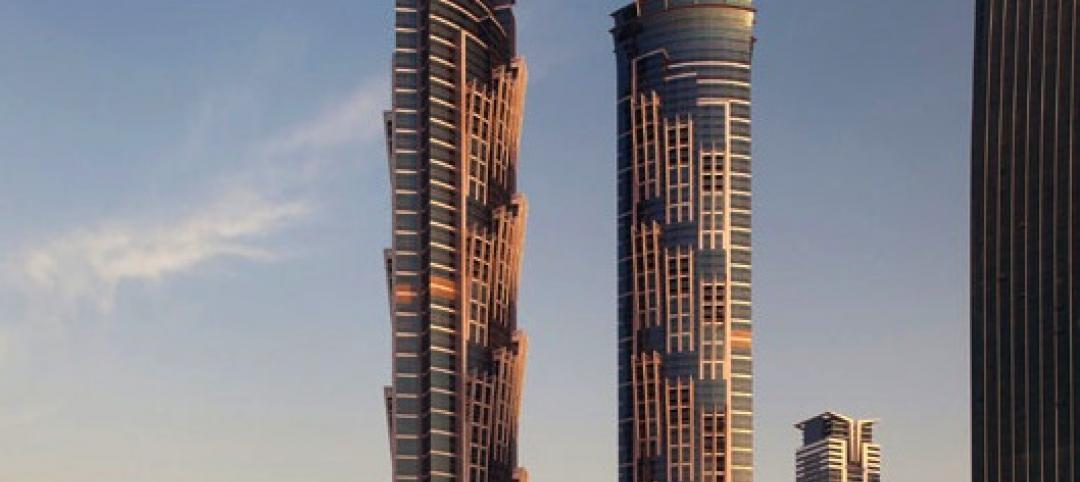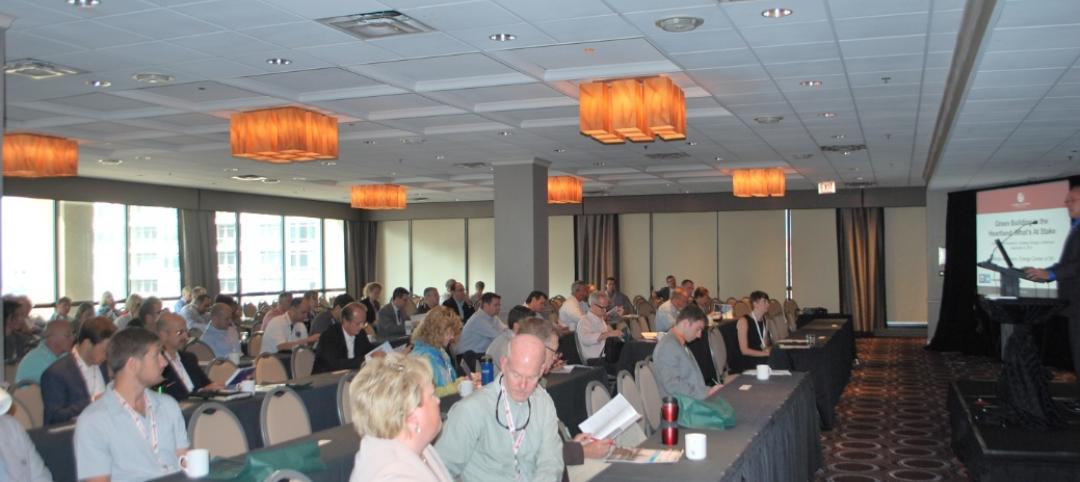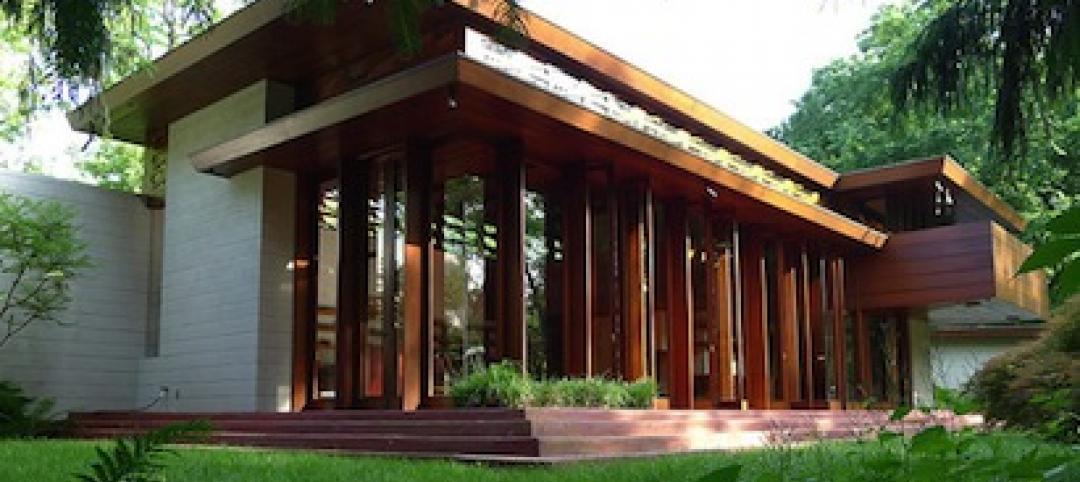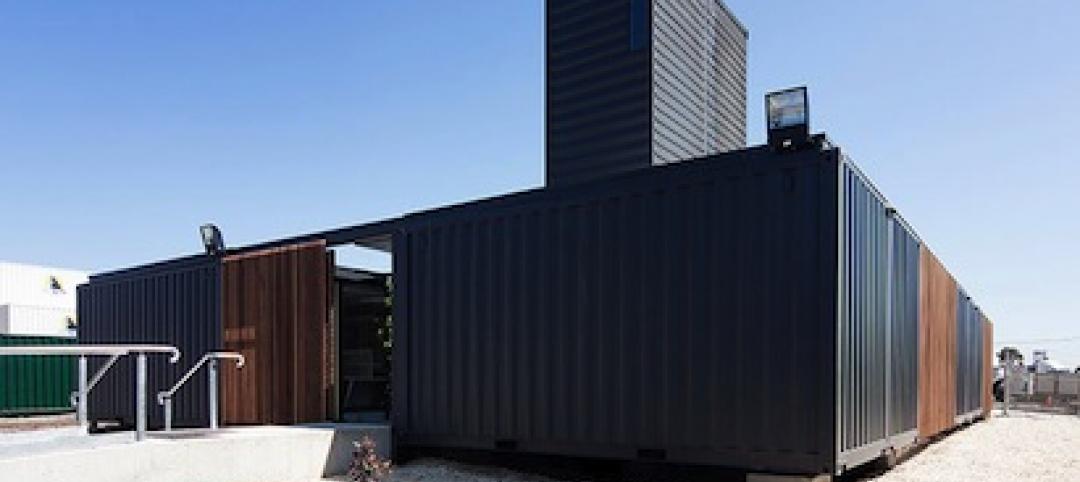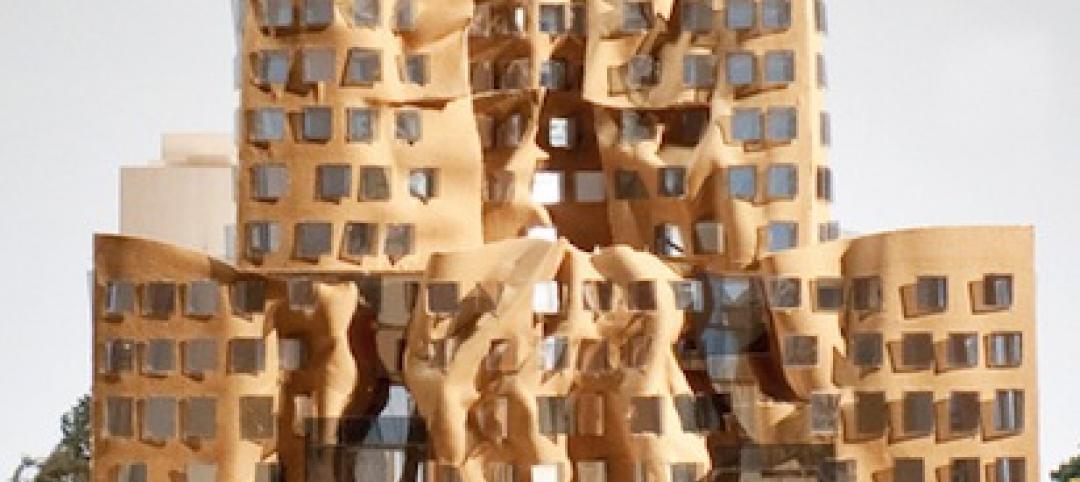Completed in 1932, the Potter County Courthouse is recognized as one of the most significant high-rise Art Deco courthouses in Texas, and among the most prominent in the country. Local architect W.C. Townes, of Townes, Lightfoot and Funk, designed the eight-story structure with a terra cotta fac?ade adorned in decorative figural and botanical bas-relief depicting the region’s cultural and natural history.
After more than 80 years of use, the courthouse was long overdue for an interior modernization and exterior restoration. The $15.5 million effort was undertaken as part of the Texas Historic Courthouse Preservation Program, a state-funded program that covered about one-third of the project’s cost. It included a complete fac?ade restoration—including repairing and re-anchoring damaged units and replacing mortar joints—and an overhaul of the interior spaces to meet current building and accessibility codes and the operational and functional needs of the county’s administrative offices and courts.
The original mechanical systems were replaced with a four-pipe scheme utilizing a 200-ton chiller and 250-ton cooling tower. An additional 60-ton, air-cooled chiller was placed on the roof, and 12 air-handling units were located on the various roofs at the fifth, sixth, and eighth floors. The new system, combined with automatic controls and enhanced thermal roof insulation, is expected to reduce energy costs by 20% annually.
POTTER COUNTY COURTHOUSE
Amarillo, TexasBuilding TeamSubmitting firm: JQ (structural engineer)Owner: Potter CountyArchitect: ArchiTexasMEP engineer: Johnson Consulting EngineersConstruction manager: Southwest General ContractorsGeneral contractor: Journeyman ConstructionGeneral InformationSize: 62,390 sfConstruction cost: $15.5 millionConstruction time: November 2009 to August 2012Delivery method: Design-bid-build
The Reconstruction Awards judges hailed the Building Team for its painstaking efforts in preserving the historical elements of the building while modernizing the structure. To accommodate the new mechanical systems and other modern amenities, such as fire/life safety systems, information technology infrastructure, and high-density shelving units, the team devised several creative structural solutions:
• Tunnel expansion. To preserve the courthouse’s original, first-floor terrazzo floors, the team utilized the facility’s underfloor utility tunnels to run new insulated piping. Deemed inadequate to handle the new systems, the existing tunnels had to be carefully reinforced and expanded. In total, more than 200 feet of concrete- and masonry-lined tunnel was added on to the existing layout, allowing for the terrazzo flooring to remain intact.
• Clay tile floor removal. The added weight of the rooftop mechanical units and high-density shelving meant that certain areas of the existing structure on floors two through six would need to be reinforced. However, because the plaster ceiling finish was applied directly to the original clay tile and reinforced concrete joist floor system, structural members could not be inserted below the original ceiling level.
The solution involved removing portions of the original clay tile forms to allow the installation of new steel beams constructed from steel T-sections between the existing concrete joists, thereby increasing the floor load capacity. The use of T-sections in lieu of standard wide-flange sections facilitated access for completion of field connections to the existing structure and the placement of non-shrink grout between the top of the steel members and the underside of the original floor slab to provide full load transfer.
• Use of CFRP strips. In order to accommodate new stairs, vertical chases, and mechanical infrastructure, numerous openings of various sizes had to be cut into the slab on floors seven and eight. The original floor structure on these levels is eight-inch reinforced concrete slabs spanning the concrete beams.
To maintain the structural integrity and continuity of the floor slabs, strips of laminated, 1?4-inch-thick carbon fiber reinforcement polymer (CFRP) were used to redistribute the loads adjacent to and around the openings. Larger openings for the stairs and chases called for additional reinforcement, and CFRP strips were placed on top or below the slab, corresponding to the tension zone of the slab system.
In several locations, strips were placed in both directions around the openings to properly distribute the load.
“We liked how the team carefully pre- served the clay-tile floor and the reinforced concrete slab with the strengthening schemes hidden out of sight,” said judge K. Nam Shiu, Senior VP, Director of Restoration Services, Walker Restoration Consultants (www.walkerrestoration.com). “They successfully provided up-to-date floor functionality while keeping the layout and look of the original building.”
The Building Team took careful measures to avoid disturbing the historical elements in the building. This included expanding an existing utility tunnel (above) and applying special structural reinforcement polymer to select concrete frame members (top). Photo: Brenda Bagot
Related Stories
| Jan 21, 2014
2013: The year of the super-tall skyscraper
Last year was the second-busiest ever in terms of 200-meter-plus building completions, with 73 towers, according to a report by the Council on Tall Buildings and Urban Habitat.
| Jan 20, 2014
BUILDINGChicago/Greening the Heartland Conference 'call for 2014 educational proposals' is now open
The conference and exposition will take place September 29-October 1, 2014, at North America’s largest LEED Gold-certified hotel, the Holiday Inn Chicago Mart Plaza. Deadline for proposals is February 28, 2014.
| Jan 17, 2014
Crystal Bridges Museum will move Frank Lloyd Wright house from New Jersey to Arkansas
Numerous architectural experts have concluded that moving the Bachman Wilson House offers its best hope for long-term survival.
| Jan 17, 2014
Australian project transforms shipping containers into serene workplace
Australian firm Royal Wolf has put its money where its mouth is by creating an office facility out of shipping containers at its depot and fabrication center in Sunshine, Victoria.
| Jan 17, 2014
The Starchitect of Oz: New Gehry building in Sydney celebrates topping out
The Dr. Chau Chak Wing Building at the University of Technology, Sydney, will mark Frank Gehry's debut project in the Australian metro.
| Jan 16, 2014
Construction spending for 2013 finishing 5% higher than 2012: Gilbane Construction Economics report
??Construction growth is looking up, according to the December 2013 release of the periodic report Construction Economics, authored by Gilbane Building Company. Construction spending for 2013 will finish the year up 5%.
| Jan 16, 2014
ASHRAE revised climatic data for building design standards
ASHRAE Standard 169, Climatic Data for Building Design Standards, now includes climatic data for 5,564 locations throughout the world.
| Jan 15, 2014
6 social media skills every leader needs
The social media revolution—which is less than a decade old—has created a dilemma for senior executives. While its potential seems immense, the inherent risks create uncertainty and unease.
| Jan 15, 2014
Report: 32 U.S. buildings have been verified as net-zero energy performers
The New Buildings Institute's 2014 Getting to Zero Status report includes an interactive map detailing the net-zero energy buildings that have been verified by NBI.
| Jan 14, 2014
Sherwin-Williams unveils colormix 2014
Drawing influence from fashion, science, nature, pop culture and global traditions, Sherwin-Williams introduces colormix™ 2014, which captures colors that inspire creativity and design in today’s world. The four-palette collection provides design professionals with a guide to help them define the moods they want to create and select colors for their projects.






